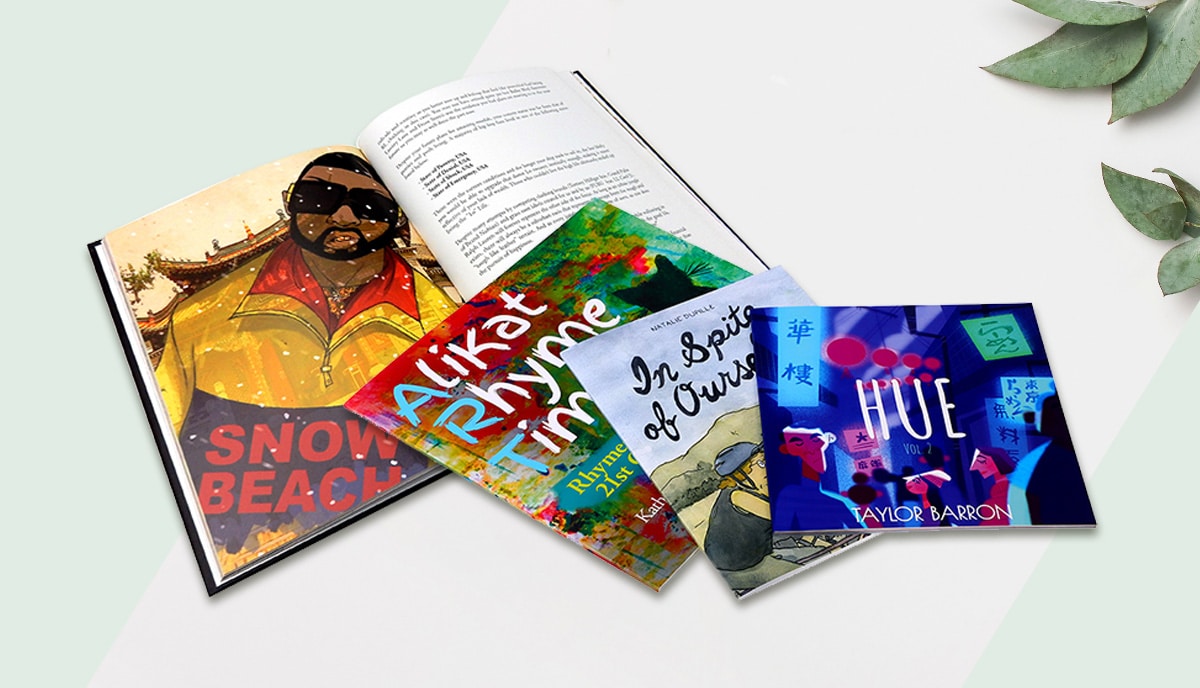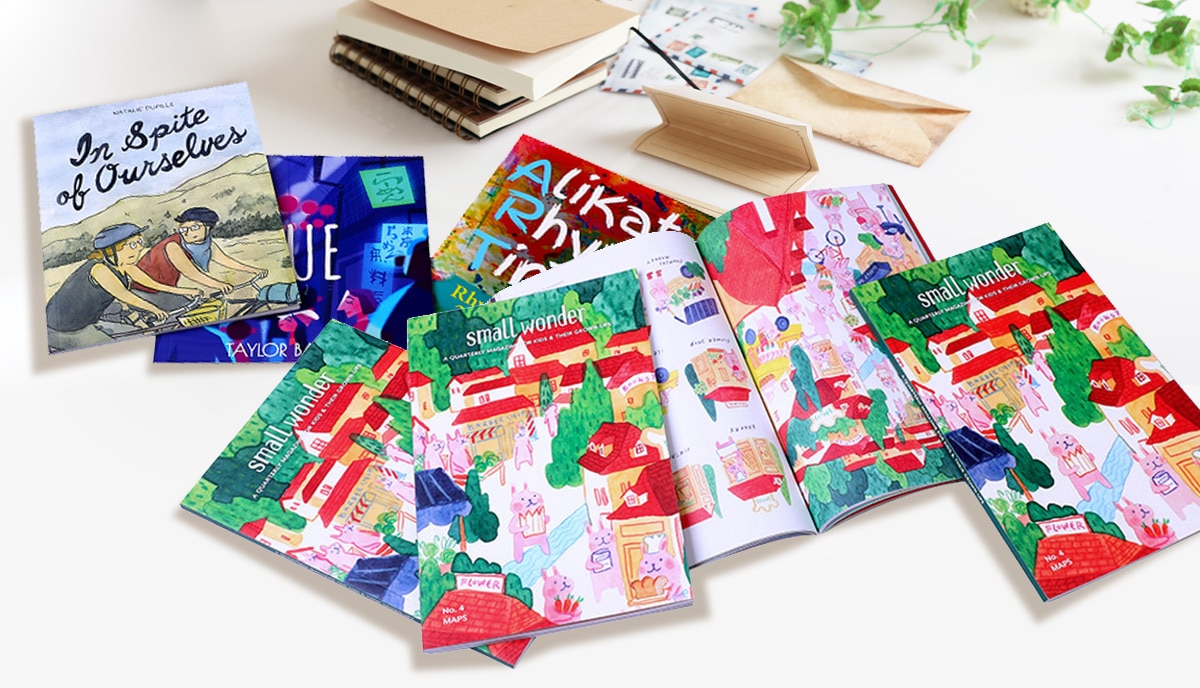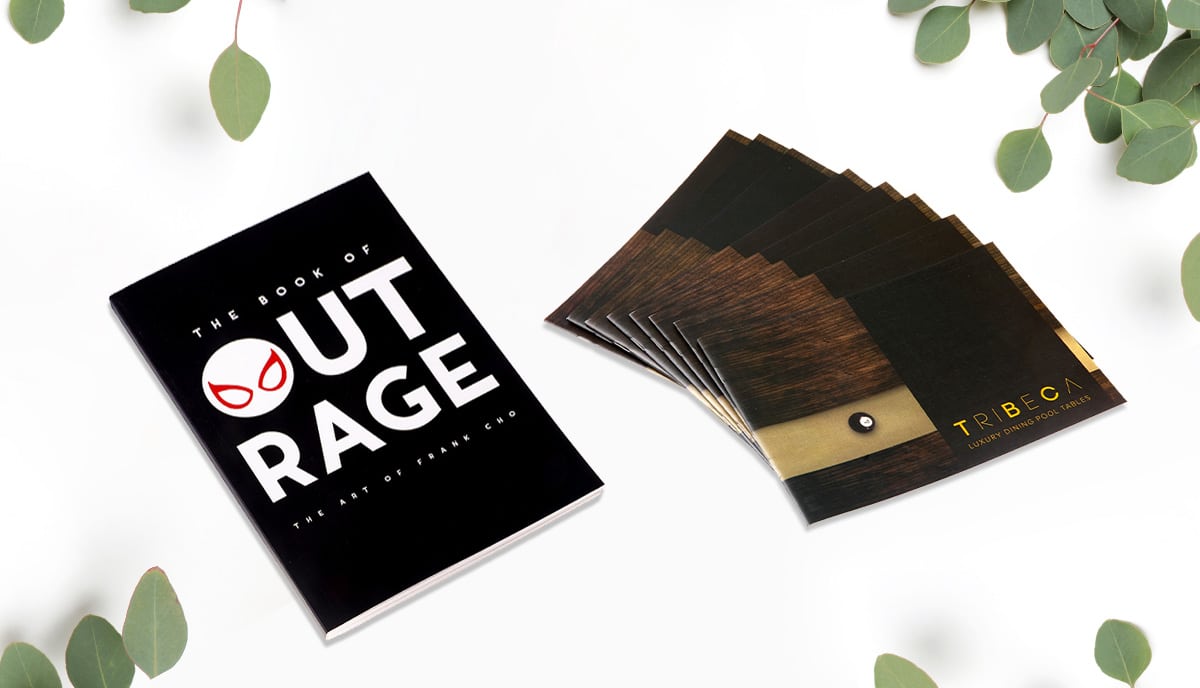If you're self-publishing your book, one of the most important choices to make is the type of binding. We examine the pros and cons of the three most popular book binding options.

Book binding options
Bookbinding refers to the technique we use to hold all the pages of your book together and the binding often serves as a protective cover for the interior pages. We usually make the cover of a thicker paper which we may also ‘finish' with a protective coating such as varnish or a laminate. Depending on the number of pages and the binding style, your book may have a spine. The back and front covers are printable areas which you can use for artwork, the author's name, the title of the books, and so on. Binding techniques may use glue, binding threads, or both.
Did you know that literally dozens of book binding possibilities exist? But many of them are variations of a more common type—so, sewn perfect binding, for example, would fall into that category as a variation on standard perfect binding—and so we'll concentrate here on the three most popular book binding styles. Whatever your book binding needs, one of these is likely to be the best solution. In this post, we'll look at the pros and cons of hardcover binding, perfect binding, and saddle stitch binding.
If you're unsure about any of these book binding options or how to choose between them, please talk to us. One of our binding experts will be happy to guide you to the best solution based on your needs and your budget. You may also find our post, A Quick Guide to Bookbinding useful.
Hardcover or case binding
Mainstream publishing houses and successful independent authors print millions of hardcover books—also known as hardback and hard case or case covered books—every year. They're popular with publishers for first editions of novels and they're often the standard binding style for science, history, and nature books among others. They're usually larger than other books and have a cardboard cover wrapped in printed paper. The interior pages are sewn together in folded batches known as signatures, and then collated and sewn and glued into the casing. The inside of the covers at the front and back are glued onto the “end papers” which are positioned between the covers and the first and last pages of the interior.
Hardcover pros and cons
The most significant pros of hardcover bookbinding are that your books will be more visually impressive and feel “hefty” in the hand. They ooze a sense of quality and value. This also means, although they cost a little more to produce than paperbacks—which we'll look at in a second—you can sell them at a much higher price. So, if you can afford the initial investment, you can make more profit in the long run.
Hardback books are also more robust and durable compared to any other book binding. So, they tend to last longer and will look good after many years. This is why most public libraries prefer to buy the hardcover editions of their stock. The books will get a lot more handling than most, and so the hardcover is a worthwhile investment for them as they'll endure being constantly checked in and out, carried around, stuffed into bags, and so on. They're also harder to steal!
The main potential con to printing a book in a hard case binding is the initial outlay. It's the most expensive upfront cost of any bookbinding solution. You might also consider how much they weigh as a downside, especially if you need to transport them long distances.
Perfect binding
Perfect binding is also known as paperback or softcover binding. The result is a tidy, professional book, but instead of the hard case cover of a hardback, the cover is a single sheet of heavier paper or cardstock, coated on one side for printing, which wraps around the interior pages to form a front cover, a spine area, and a back cover. The interior pages are collated in a block, glued together down one side and then glued into the cover along the spine with a strong, flexible adhesive. Finally, the cover and pages are trimmed so that they are all the same, creating the “perfect” binding.
Perfect binding pros and cons
Everyone is familiar with perfect bound books, even though outside the printing and bookbinding industry they are better known as paperbacks. This is a professional binding suitable for commercial purposes and many mainstream books—especially genre fiction such as science fiction, fantasy, crime, mystery, and romance—are published only in perfect bound editions. Paperbacks are also lighter and so less costly to ship and distribute compared to hardcovers.
However, softcovers are less durable than hardcovers, can get bent, and the pages may tear more easily. Also, because the pages are not sewn, can come loose with repeated use over many years. Although, if you take proper care of them, they can also last a lifetime. If there's another disadvantage of perfect binding, it's that you can't open the books flat without breaking the spine. But if you opt for the sewn perfect binding variation, you can lay the books flat open just like a hardcover.
Saddle stitch binding
Saddle stitched books—so called because they were originally bound with thread and sometimes still are—are an excellent option if your book has 46 pages or fewer. To make a saddle stitched book, the sheets are folded and stacked together inside each other. The pages are then positioned inside a folded cover made of thicker, coated paper, and stapled together along the crease. These books are attractive, lightweight, easy and cost-effective to store, ship, and distribute.
Saddle stitch binding pros and cons
If you need to keep costs down and you have fewer pages then the average paperback, saddle stitching is an excellent choice. You can also open them and lay them flat without damage as they don't have a spine. The printing process is relatively straightforward and so turnaround times can be faster than with other binding styles.
But you're limited to a practical maximum page count of 46. Much more than that, and you'll start to see the pages “creeping”. This is when the inner pages start to stick out further than the outer pages and the cover. The books are more easily damaged and can get bent or torn, so may not be ideal if you need something more robust and durable.
Talk to us!
We hope that's been a useful and interesting introduction to the three most popular book binding styles. Choosing the right binding for your self-published book isn't always easy, but it's as well to make an informed decision based on the facts.
We've been in the industry over 25 years and during that time have built a solid reputation as one of the world's most respected and reliable international offset printers. While we also work with large companies, we're genuinely supportive of self-published writers, artists, and other independent creatives.
If you'd like to talk to us about your next self-publishing project and how we can help, we'd love to hear from you. Get in touch and one of our experienced, expert, and enthusiastic team will be delighted to listen and advise. And if you'd like a no-obligation quote to compare with your other options, no problem. Just ask.










